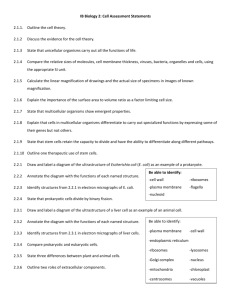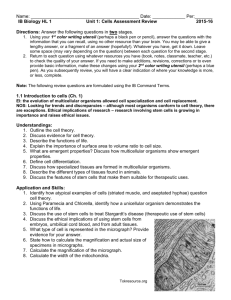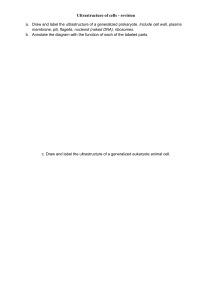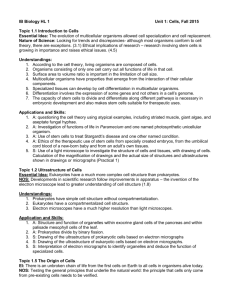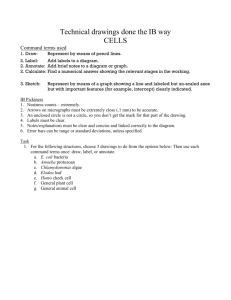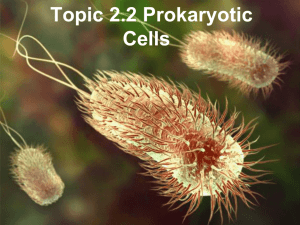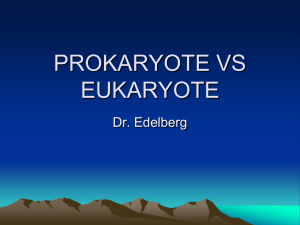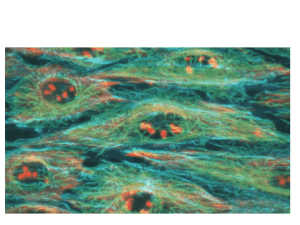Cell Biology Vocabulary & Cell Structure Worksheet
advertisement
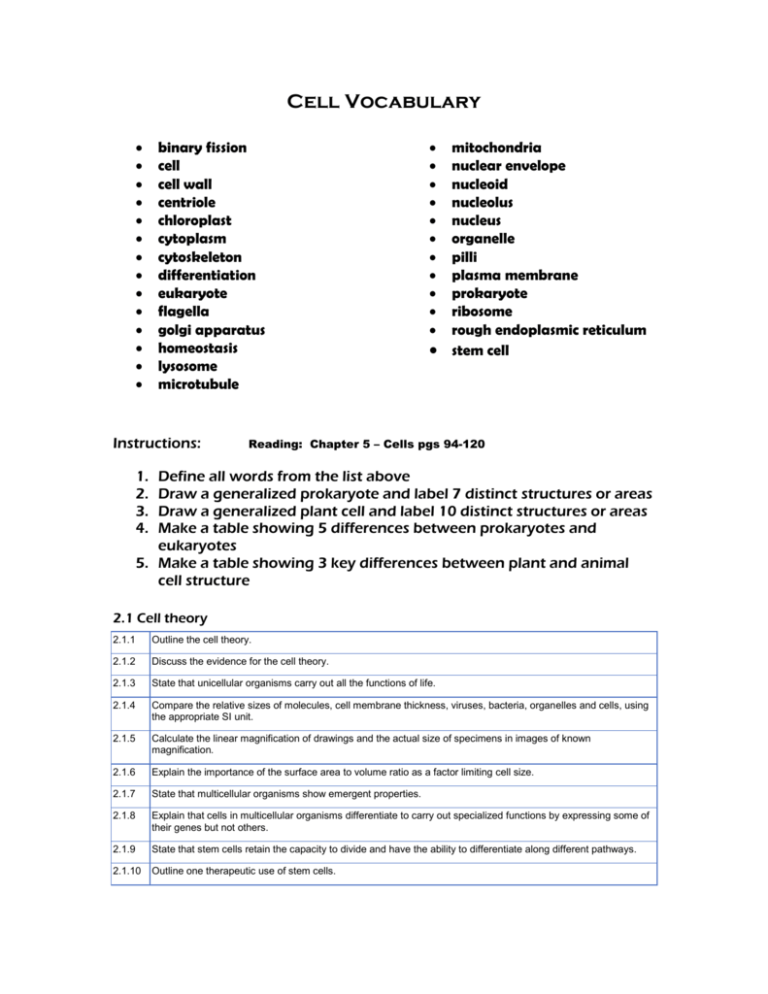
Cell Vocabulary binary fission cell cell wall centriole chloroplast cytoplasm cytoskeleton differentiation eukaryote flagella golgi apparatus homeostasis lysosome microtubule Instructions: mitochondria nuclear envelope nucleoid nucleolus nucleus organelle pilli plasma membrane prokaryote ribosome rough endoplasmic reticulum stem cell Reading: Chapter 5 – Cells pgs 94-120 1. 2. 3. 4. Define all words from the list above Draw a generalized prokaryote and label 7 distinct structures or areas Draw a generalized plant cell and label 10 distinct structures or areas Make a table showing 5 differences between prokaryotes and eukaryotes 5. Make a table showing 3 key differences between plant and animal cell structure 2.1 Cell theory 2.1.1 Outline the cell theory. 2.1.2 Discuss the evidence for the cell theory. 2.1.3 State that unicellular organisms carry out all the functions of life. 2.1.4 Compare the relative sizes of molecules, cell membrane thickness, viruses, bacteria, organelles and cells, using the appropriate SI unit. 2.1.5 Calculate the linear magnification of drawings and the actual size of specimens in images of known magnification. 2.1.6 Explain the importance of the surface area to volume ratio as a factor limiting cell size. 2.1.7 State that multicellular organisms show emergent properties. 2.1.8 Explain that cells in multicellular organisms differentiate to carry out specialized functions by expressing some of their genes but not others. 2.1.9 State that stem cells retain the capacity to divide and have the ability to differentiate along different pathways. 2.1.10 Outline one therapeutic use of stem cells. 2.2 Prokaryotic cells 2.2.1 Draw and label a diagram of the ultrastructure of Escherichia coli (E. coli) as an example of a prokaryote. 2.2.2 Annotate the diagram from 2.2.1 with the functions of each named structure. 2.2.3 Identify structures from 2.2.1 in electron micrographs of E. coli. 2.2.4 State that prokaryotic cells divide by binary fission. 2.3 Eukaryotic cells 2.3.1 Draw and label a diagram of the ultrastructure of a liver cell as an example of an animal cell. 2.3.2 Annotate the diagram from 2.3.1 with the functions of each named structure. 2.3.3 Identify structures from 2.3.1 in electron micrographs of liver cells. 2.3.4 Compare prokaryotic and eukaryotic cells. 2.3.5 State three differences between plant and animal cells. 2.3.6 Outline two roles of extracellular components.
